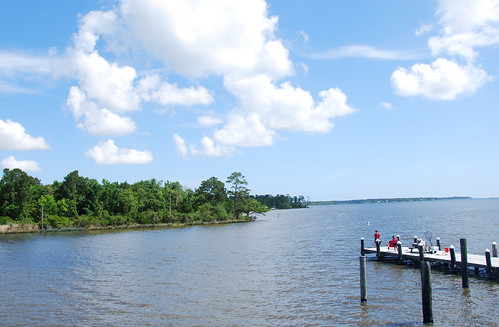
The Gulf Coast ecosystem is vital to our nation and our economy.
The Gulf Coast ecosystem is vital to our nation and our economy, providing valuable energy resources, abundant seafood, extraordinary recreational activities and a rich cultural heritage. This ecosystem was significantly injured by the Deepwater Horizon oil spill—the worst environmental disaster in U.S. history—and has also suffered from harm caused by hurricanes, subsidence and other human actions and naturally-occurring events.
With the historic settlement of the litigation with BP, there will be up to $16 billion available for ecosystem restoration in watersheds across Florida, Alabama, Mississippi, Louisiana and Texas through the RESTORE Act, the Natural Resource Damages Assessment process and the National Fish and Wildlife Foundation.
Today, the White House Council on Environmental Quality and the Office of Management and Budget released a memorandum directing federal agencies to take steps to ensure we are doing everything we can to deliver restoration dollars more efficiently and effectively. The memo calls upon USDA, the Departments of Army, Commerce, Interior and the EPA to prioritize ecosystem restoration investments in the Gulf and ensure robust coordination in the review and permitting processes. Agencies will also ensure that we work together and with the states in designing strategic projects and maximizing leveraging opportunities.
The federal government has a longstanding partnership with the five Gulf Coast States for conservation and restoration of the region. Given the complexity and scope of the restoration challenges before us, it is imperative that we build on this partnership and work together on this multi-generational ecological restoration.
USDA serves as the chair of the Gulf Coast Ecosystem Restoration Council (RESTORE Council). Late last year the council approved the first tranche of funds for Gulf restoration. This initial investment of approximately $157 million will deliver restoration projects and help fund detailed plans for additional projects that can be implemented as more funds become available from the BP settlement.
In August, the RESTORE Council released a draft update to our Comprehensive Plan. This draft update provides a framework that ensures restoration investments maximize benefits for the ecosystem and for the many Gulf communities that depend on a healthy Gulf. The draft plan improves collaboration among Council members and partner restoration programs, improves how we use science to restore the Gulf, increases transparency and advances planning for the investments that the federal government and States will make to restore the Gulf. After reviewing the extensive public comments the Restore Council has received over the last several weeks, we will finalize the comprehensive plan later this year.
But with these dollars, as well as funds from other sources, it is vital that the federal agencies be as efficient as possible in designing, analyzing and ultimately putting meaningful restoration projects on the ground in each of the states. These projects will include sediment diversions, forest and marsh restoration, oyster restoration, more sustainable farm and ranch operations, land conservation, and many other activities.
At the same time, it is critical that we improve the efficiency and timeliness of permitting and other regulatory reviews required to implement these projects.
As Chair of the RESTORE Council, I want to thank Director Donovan and Managing Director Goldfuss for their leadership in taking steps that will improve the speed and quality of restoration in the coming years. On behalf of USDA and our other federal partners, we look forward to working with the States to help restore the Gulf for residents of the region and for all Americans.
No comments:
Post a Comment
Note: Only a member of this blog may post a comment.